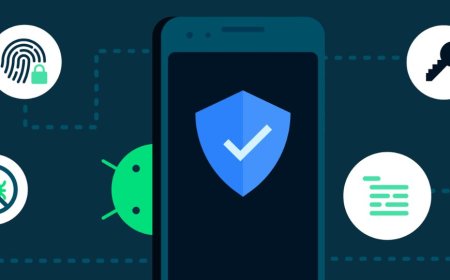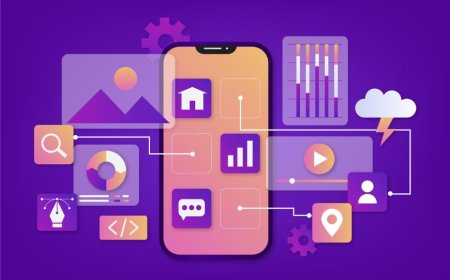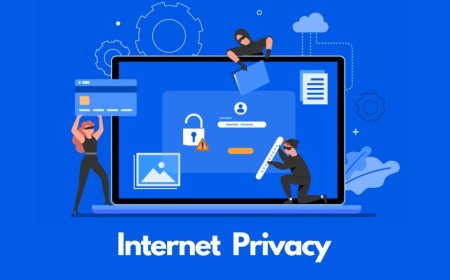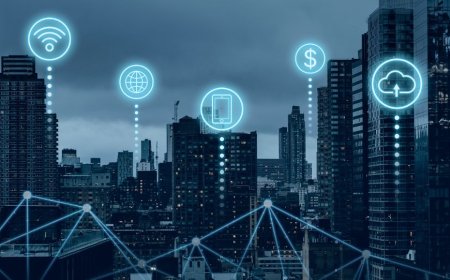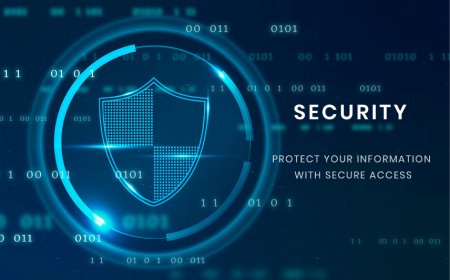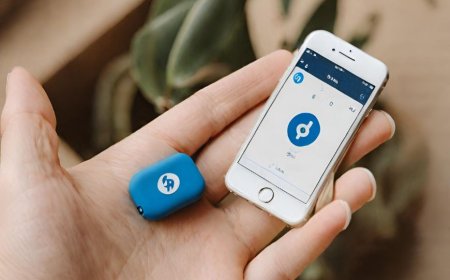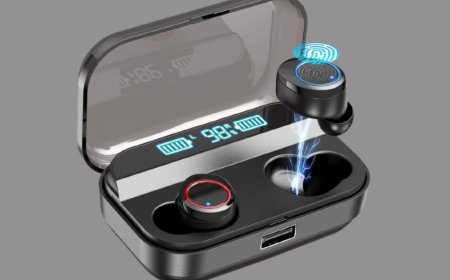Android Security: Protecting Your Device
Tectoks: Your go-to guide for Android security. Discover effective ways to safeguard your device and keep your information protected
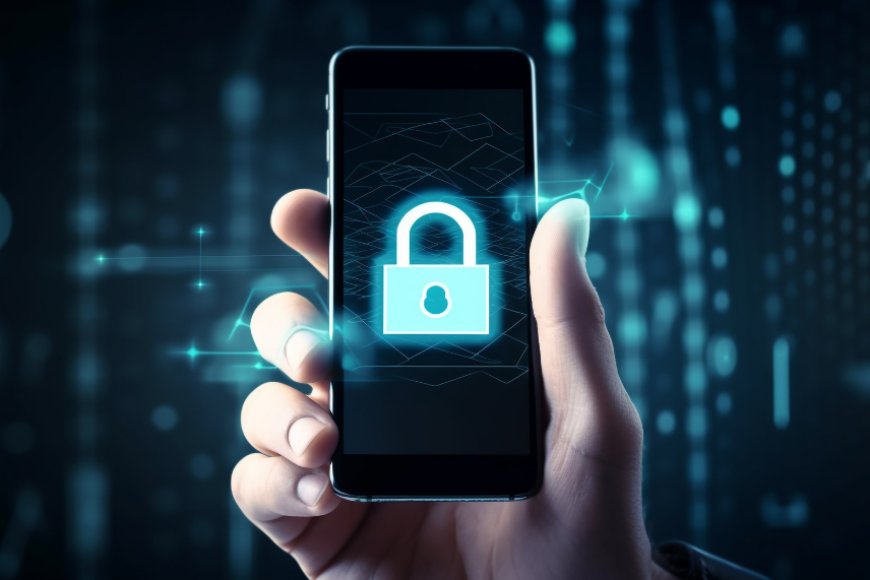
Table of contents:
-
Introduction
-
Android security measures
-
Mobile device safety tips
-
Preventing data breaches
-
Protecting against malware
-
Securing personal data
-
Conclusion
1. Introduction
Android is the most popular operating system for smartphones and tablets, with over 70% market share. However, this also makes it a prime target for cybercriminals and hackers who want to exploit the vulnerabilities and weaknesses of the platform. Android users face various threats and risks to their personal and business data, such as data breaches, malware, phishing, unsecured public WiFi, and physical device theft. These threats can compromise the privacy, integrity, and availability of the data, as well as cause financial and reputational damage to the users and their organizations.
In this blog post, we will discuss the importance of Android security and data protection and how to protect your Android devices from these common threats.
We will cover the following topics:
-
How Android provides built-in security features and updates to prevent and mitigate attacks
-
How to choose and install secure and trustworthy apps from official and third-party app stores
-
How to use encryption, passwords, biometrics, and remote wipes to safeguard your device and data in case of loss or theft
-
How to avoid phishing, spam, and malicious websites by using security apps, browsers, and VPNs
-
How to backup and restore your data to the cloud or a local storage device
By following these best practices, you can enhance the security and data protection of your Android devices and enjoy the benefits of mobility without compromising your safety. Stay tuned for further information in the following parts.
2. Android security measures
Android security measures are designed to protect your device and data from unauthorized access and data loss.
Some of the built-in security features and options that Android offers are:
-
Encryption: Encryption scrambles the data on your device so that only you can access it with your password, PIN, or pattern. Encryption also protects your data in case your device is lost or stolen. You can encrypt your device by going to Settings > Security > Encryption & Credentials.
-
Lock screen: The lock screen prevents others from accessing your device without your permission. You can set up a password, PIN, or pattern to unlock your device or use biometric authentication such as fingerprint, face, or iris recognition. You can also customize your lock screen settings, such as notifications, shortcuts, and smart locks. You can access these settings by going to Settings > Security > ScreenLock.
-
Biometric authentication: Biometric authentication uses your unique physical features, such as a fingerprint, face, or iris, to verify your identity and unlock your device. Biometric authentication is more secure and convenient than passwords, PINs, or patterns. You can enroll and manage your biometric data by going to Settings > Security >Biometrics.
-
Remote wipe: A remote wipe allows you to erase all the data on your device remotely if it is lost or stolen. You can use the Find My Device app or website to locate, lock, or erase your device. You can also add a message or phone number to the lock screen to help someone return your device. You can enable this feature by going to Settings > Security > Find My Device 12.
These measures can prevent unauthorized access and data loss by making it harder for attackers to break into your device, access your data, or use your device for malicious purposes. For example, encryption can prevent attackers from reading your data even if they physically remove the storage device from your device. The lock screen can prevent attackers from accessing your device or changing your settings without your knowledge. Biometric authentication can prevent attackers from guessing or stealing your password, PIN, or pattern. Remote wipes can prevent attackers from using your data or device for identity theft, fraud, or ransomware.
3. Mobile device safety tips
Mobile device safety tips are important to protect your phone and data from various threats and risks, such as hacking, identity theft, malware infection, data loss, and more.
Here are some practical and easy-to-follow tips for enhancing the security and privacy of your mobile device:
-
Always lock your phone when it’s not in use: This will prevent unauthorized access to your device and data. You can set up a password, PIN, pattern, fingerprint, or face recognition to unlock your phone. You can also customize your lock screen settings, such as notifications, shortcuts, and smart lock.
-
Set up strong passwords and change them regularly. This will make it harder for hackers to guess or crack your passwords. You should use different passwords for different apps and accounts and avoid using common or personal information, such as your name, birthday, or pet’s name. You can also use a password manager tool to securely generate and store your passwords.
-
Don’t download apps from third-party sites. This will reduce the risk of installing malicious or fake apps that can steal your data, infect your device, or display unwanted ads. You should only download apps from official and trusted sources, such as the Google Play Store or Apple App Store. You should also check the app ratings, reviews, permissions, and updates before installing or updating them.
-
Connect to secure WiFi networks. This will protect your data from being intercepted or tampered with by hackers or snoopers on public or unsecured WiFi networks. You should avoid using public WiFi for sensitive activities, such as banking, shopping, or logging into your accounts. You should also use a VPN (virtual private network) app to encrypt your traffic and hide your location.
-
Backup and restore your data regularly. This will prevent data loss in case your device is lost, stolen, damaged, or infected. You can backup your data to the cloud or a local storage device, such as a computer, external hard drive, or USB flash drive. You can also use the Find My Device feature to locate, lock, or erase your device remotely.
By following these tips, you can enhance the security and privacy of your mobile device and enjoy the benefits of mobility without compromising your safety.
4. Preventing data breaches
A data breach is an incident in which unauthorized individuals gain access to confidential information, such as personal or financial data. Data breaches can have serious consequences for the user, such as identity theft, fraud, blackmail, or legal liability.
Some of the common causes and sources of data breaches are:
-
Weak and stolen passwords: Hackers can use various methods to guess or crack passwords and access sensitive data. Users should use strong and unique passwords for different accounts and change them regularly.
-
Malware and hacking: Hackers can use malicious software or techniques to infiltrate systems and steal data. Examples include viruses, ransomware, spyware, and man-in-the-middle attacks. Users should install antivirus software and firewalls and keep them updated.
-
Insider threats: Employees or other authorized individuals can misuse their access privileges to intentionally or unintentionally leak or steal data. Organizations should monitor and limit access to sensitive data and enforce security policies and training.
-
Third-party vulnerabilities: Organizations often rely on third-party vendors or partners for various services, and if they are not properly secured, they can expose data to hackers. Organizations should vet and audit their third-party providers and ensure they comply with security standards.
-
Social engineering: Hackers can trick users into revealing sensitive information or clicking on malicious links or attachments by pretending to be someone else or using other deceptive means. Users should be wary of unsolicited or suspicious emails or messages and verify the sender’s identity.
Some of the strategies and best practices for preventing and detecting data breaches are:
-
Data encryption scrambles the data so that only authorized parties can access it with a key or password. Users should encrypt their data on their devices and in storage.
-
Access control management: Access control management restricts who can access what data and how. Users should use strong authentication methods, such as passwords, biometrics, or two-factor authentication, and log out of their accounts when not in use.
-
Data backup and recovery: Data backup and recovery involves creating copies of data and storing them in a safe location, such as the cloud or an external drive, and restoring them in case of data loss or corruption. Users should back up their data regularly and test their recovery plans.
-
Security awareness and education: Security awareness and education involve informing and training users about the risks and best practices of data security. Users should stay updated on the latest threats and trends and follow the security guidelines and policies of their organizations.
-
Security assessment and monitoring: Security assessment and monitoring involves evaluating and testing the security posture and performance of systems and networks and detecting and responding to any anomalies or incidents. Users should conduct periodic security audits and scans and report any suspicious activity or breach.
By following these best practices, users can enhance their data security and privacy and reduce the likelihood and impact of data breaches.
5. Securing personal data
Personal data is any information relating to a recognized or identifiable living individual. It can include your name, email, phone number, address, health information, financial information, and more. Personal data is important to protect because it can be used to harm you or others if it falls into the wrong hands. For example, personal data can be used to steal your identity, commit fraud, blackmail you, or target you with unwanted ads or messages
There are many ways that personal data can be exposed or compromised, such as:
-
Sharing on social media: If you post too much personal information on social media platforms, you may reveal sensitive details about yourself or your location that can be exploited by cybercriminals, stalkers, or advertisers.
-
Using public Wi-Fi: If you connect to an unsecured or public Wi-Fi network, you may expose your online activity and data to hackers who can intercept, modify, or steal your data
-
Losing the device: If you lose your device or it gets stolen, you may lose access to your data and risk that someone else can access it without your permission.
To secure your data, you should follow some best practices, such as:
-
Backing up your data: You should regularly back up your data to a secure location, such as an external hard drive or a cloud service so that you can restore it in case of data loss or corruption.
-
Deleting unnecessary data: You should delete any data that you no longer need or use, such as old emails, files, or apps, to reduce the amount of data that can be exposed or compromised.
-
Using cloud storage: You should use a reputable cloud storage service that encrypts your data and provides security features, such as password protection, two-factor authentication, and access control, to store and share your data online.
-
Using strong passwords: You should use strong and unique passwords for each of your accounts and devices, and change them regularly. You should also use a password manager to store and manage your credentials securely.
-
Using encryption: You should use encryption to protect your data from unauthorized access, especially when storing or transmitting sensitive data, such as health or financial information. Encryption scrambles your data so that only you or someone with the right key can read it.
-
Using antivirus software: You should use reliable antivirus software to protect your device from malware, viruses, and other threats that can damage or steal your data. You should also keep your software updated and scan your device regularly.
6. Conclusion
In this post, we have discussed how Android security and data protection can help you keep your mobile device and your data safe from various threats. We have also shared some tips and best practices for enhancing your Android security and data protection, such as:
-
Enabling device encryption and lock screen security
-
Installing security updates and patches
-
Avoiding malicious apps and links
-
Using VPNs and secure browsers
-
Managing app permissions and notifications
-
Using biometric authentication and password managers
-
Backing up and deleting your data
Android security and data protection are essential for protecting your privacy, identity, and assets. By following these tips and best practices, you can enjoy a more secure and reliable mobile experience.
What are some of the challenges or questions that you have faced or have regarding Android security and data protection? Please share your ideas and experiences in the section below. We'd love to hear from you and assist you.
What's Your Reaction?







